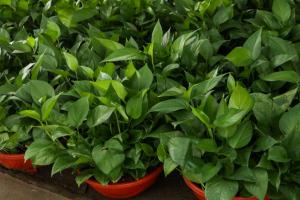How to Water Plants Inside
Plants require sufficient water to grow and thrive, and providing the right amount of water at the right time is crucial to their health. Watering indoor plants may seem simple, but there are several factors to consider to ensure that your plants receive the right amount of water. Here are some tips to help you water your indoor plants effectively:
1. Choose the Right Potting Mix
The type of potting mix you use can play a crucial role in how well your indoor plants retain water. Ensure that you choose a high-quality potting mix that retains moisture without becoming waterlogged. The mix should also have adequate drainage to prevent root rot. You can test the quality of the potting mix by squeezing a handful of it. If water drips out, it is too wet, but if it crumbles, it is too dry.
2. Water at the Right Time
The timing of watering your indoor plants can significantly impact their health. Water them in the morning to avoid evaporation during the hottest part of the day. During winter or colder months, you can water them less frequently since they require less water due to lower light and temperature levels.
3. Beware of Over-watering
Overwatering is one of the leading causes of indoor plant death. Too much water can cause root rot, mold, and fungus. To avoid over-watering, only water your plants when the top two inches of the soil feel dry to the touch. You can also lift the pot to test if it's heavy, indicating that it's adequately watered. If it feels light, that's a sign that you need to water it.
4. Use the Right Watering Technique
You can water your indoor plants manually using a watering can or a pitcher. Alternatively, you can use a self-watering system that incorporates a water reservoir that releases water slowly. Regardless of the technique you use, ensure that you direct the water to the soil, not the leaves. Watering the leaves can lead to water spots and promote the growth of mold and fungus.
5. Consider the Humidity Levels
The humidity levels in your indoor environment can significantly affect your plants' water needs. Dry air can cause the soil to lose moisture faster, leading to the need for more frequent watering. You can raise the humidity levels in your house by using a humidifier or placing a tray of water near your plants.
Conclusion
Watering indoor plants should not be a stressful experience. By following these tips, you can ensure that your plants receive the right amount of water at the right time, promoting their growth and health. Remember to choose high-quality potting mix, water your plants at the right time, beware of over-watering, use the right watering technique, and consider the humidity levels. With these tips, your indoor plants will thrive and provide the perfect ambiance to your indoor space.

 how many times do yo...
how many times do yo... how many planted tre...
how many planted tre... how many pine trees ...
how many pine trees ... how many pecan trees...
how many pecan trees... how many plants comp...
how many plants comp... how many plants can ...
how many plants can ... how many plants and ...
how many plants and ... how many pepper plan...
how many pepper plan...






























